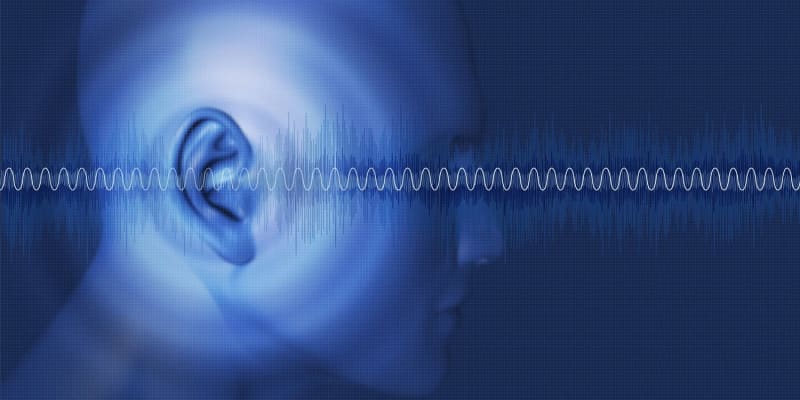
[Adobe Stock]
A new study reveals that walking enhances the brain’s response to sound, and this effect changes dynamically depending on the direction of movement. These findings, published in The Journal of Neuroscience, suggest that our brains actively adjust auditory processing to optimize navigation through our environment.
The investigation was conducted by an international team of researchers, led by Liyu Cao from Zhejiang University and Barbara Händel from the University of Würzburg. Scientists have long understood that movement and cognition are deeply connected. Prior work has shown that locomotion affects vis…

[Adobe Stock]
A new study reveals that walking enhances the brain’s response to sound, and this effect changes dynamically depending on the direction of movement. These findings, published in The Journal of Neuroscience, suggest that our brains actively adjust auditory processing to optimize navigation through our environment.
The investigation was conducted by an international team of researchers, led by Liyu Cao from Zhejiang University and Barbara Händel from the University of Würzburg. Scientists have long understood that movement and cognition are deeply connected. Prior work has shown that locomotion affects visual processing, but its influence on our sense of hearing has been less clear. The researchers sought to understand if the simple act of walking alters how the brain processes auditory information, particularly in a way that could support safe and efficient navigation.
To explore this relationship, the team designed two experiments. In the first, thirty volunteers wore a mobile electroencephalogram (EEG) system, a device that measures brain activity through sensors on the scalp. The participants walked along a path shaped like a figure eight while listening to a continuous stream of tones through earphones.
A specific, steady frequency was played in the left ear (39 Hz) and a different one in the right ear (41 Hz). This technique is designed to elicit what is known as an auditory steady-state response, a brain signal that reflects how well neural populations are synchronizing with, or “entraining” to, the sounds.
The researchers compared brain activity during three conditions: walking the path, standing still, and simply stepping in place. The results showed that the brain’s entrainment to the sounds was significantly stronger while participants were walking along the path compared to when they were standing or stepping on the spot. This suggests that purposeful movement through space, rather than just the motor act of moving one’s legs, amplifies the brain’s processing of auditory information.
The team also observed a well-known effect: a reduction in alpha brain waves, which are typically associated with neural inhibition, during walking. The data showed a connection between these two phenomena, as individuals with a larger decrease in alpha waves also tended to have a greater increase in their auditory response.
The most notable finding emerged from analyzing the brain’s activity during the turns of the figure-eight path. The team calculated a measure to determine if the brain was processing the sound from the left ear more strongly than the right, or vice versa. They discovered a dynamic pattern linked to the direction of the turn. For example, as a participant began a right turn, the brain enhanced its response to the sound in the right ear.
After passing the midpoint of the turn, the response flipped, and the brain began to more strongly process the sound from the left ear. This systematic shift suggests that the brain does not just passively receive sound but actively modulates its auditory attention in a predictive way to survey the environment during movement.
In a second experiment, the researchers introduced an element of surprise. While participants walked or stood still, the continuous tones were randomly interrupted by short bursts of white noise. These disruptive bursts could occur in the left ear, the right ear, or in both ears simultaneously. The team measured how this “perturbation” affected the brain’s ongoing entrainment to the background tones.
The analysis revealed that walking specifically heightened the brain’s reaction to noise bursts presented to only one ear. When the sound was perceived as coming from the periphery (the left or right side), the disruption to the steady-state response was greater during walking compared to standing.
When the burst was presented to both ears and perceived as coming from the center, walking did not produce a similar enhancement. This finding indicates that our auditory system may become selectively more sensitive to unexpected sounds originating from our sides when we are in motion, a mechanism that could help us react more quickly to unseen events while navigating.
The study provides a detailed snapshot of how the brain handles sound during movement, but it was conducted in a controlled laboratory setting. Future research could investigate if these same patterns of neural modulation occur in more complex, real-world environments with a variety of natural sounds.
Additional work could also explore how these auditory adjustments interact with other senses, like vision and touch, to create a complete sensory map for navigation. The findings open new avenues for understanding spatial awareness and could potentially inform the design of improved navigational aids.
The study, “Walking modulates active auditory sensing,” was authored by Xinyu Chen, Liyu Cao, Roy Eric Wieske, Juan Prada, Klaus Gramann, and Barbara F. Haendel.